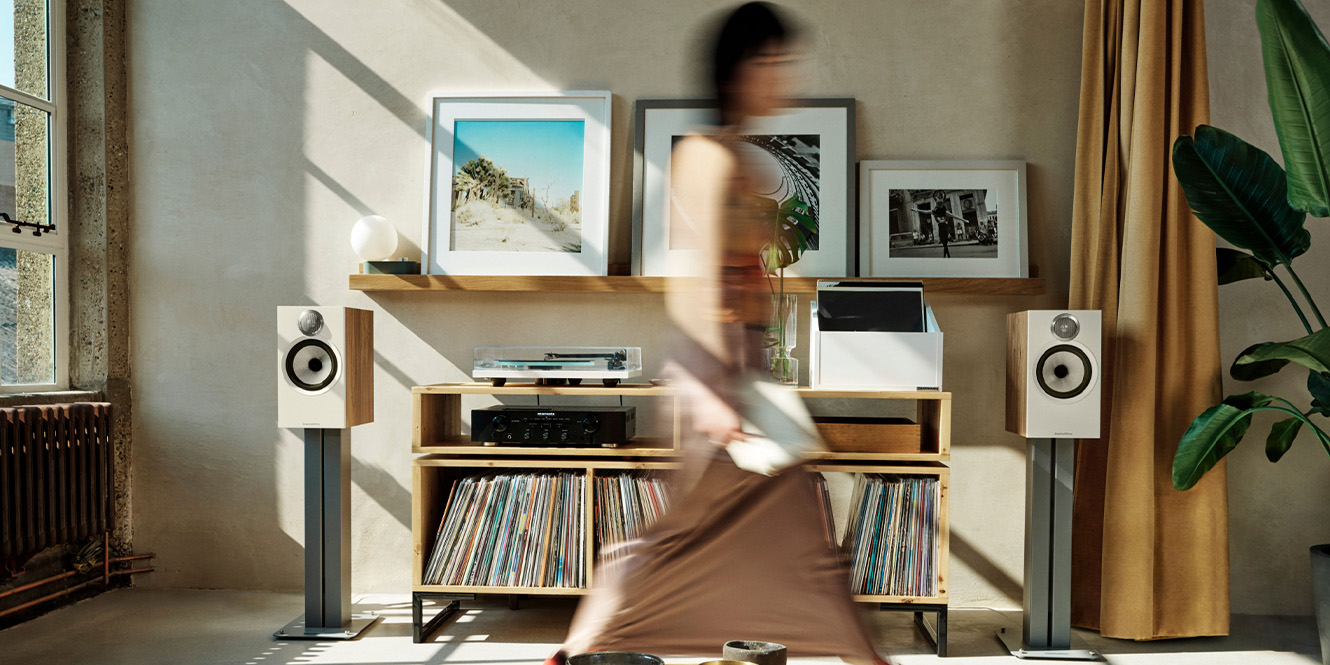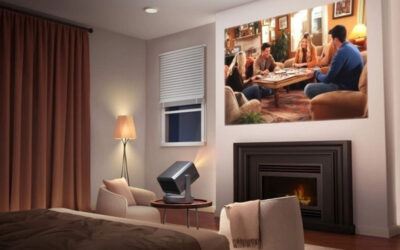In the realm of home audio, the choice of speakers can make all the difference in creating an immersive and captivating listening experience. Two prominent contenders for this purpose are bookshelf speakers and floorstanding speakers. In this article, we will delve into the intricacies of these two types of speakers, unravel their distinctions, and help you determine which one aligns best with your audio preferences and living space.
What is a Bookshelf Speaker?
Bookshelf speakers, as the name suggests, are compact speakers designed to fit on bookshelves, desks, or elevated surfaces. Despite their relatively small size, these speakers are crafted to deliver impressive sound quality, making them an ideal choice for smaller spaces and intimate listening sessions.
What is a Floorstanding Speaker?
Floorstanding speakers, also known as tower speakers, stand tall and elegant on the floor, often becoming a focal point of the room. These speakers boast larger cabinets, which allow for larger internal components and usually result in a more robust and powerful audio performance. Floorstanding speakers are often favoured for home theatre setups and larger living areas where they can truly shine.
What’s the Difference?
Size: The most apparent distinction between these two types of speakers is their size. Bookshelf speakers are compact and can easily blend into your decor, while floorstanding speakers make a bold statement with their larger presence. With that said, by the time you factor in placing a pair of bookshelf speakers on suitable stands, the amount of space they take up is similar to that of the larger floorstanding speakers – this is something we don’t see talked about enough.
Sound: Both bookshelf and floorstanding speakers can offer exceptional sound quality, but the difference lies in the extent of their projection. Floorstanding speakers, due to their larger cabinet and driver arrangement, can fill a room with rich and immersive audio, resulting in them having more presence within the space they are located.
Bass Response: Floorstanding speakers generally have the upper hand when it comes to bass response. Their larger cabinets allow for bigger and more efficient bass drivers, resulting in deeper and more impactful low-frequency performance. In addition, their larger cabinet acts as a resonance chamber that enhances the bass output from the speaker and given its larger overall internal volume makes it able to resonate at a lower frequency accentuating a deeper and fuller bass extension.Don’t let this dissuade you from bookshelf speakers if you are a fan of solid and articulated bass however. In my time working within the hifi industry it is bookshelf speakers that I have found to offer the most detailed, controlled and pleasing low-end listening experience. Namely in the ELAC Navis and Bowers and Wilkins Formation Duo. Despite their small size, these units pack a real punch that is incredibly satisfying to listen to, albeit, they just don’t get as low in the frequency spectrum as some of the larger floorstanding models. Some food for thought!
Driver Array: Floorstanding speakers often come equipped with a diverse driver array, including woofers, mid-range drivers, and tweeters. They frequently offer what is referred to in the industry as three-way driver arrays whereby there are 2 distinct cross over points splitting the drivers into 3 areas of performance (most commonly bass, mid-range and treble). This configuration contributes to a wider frequency range and better dispersion of sound. Bookshelf speakers might have fewer drivers, but advancements in technology have enabled them to deliver remarkable sound despite their size. It is also becoming more common to see three-way driver arrays within bookshelf speakers, such as, the incredibly powerful KEF R3 Meta Bookshelf Speakers that features the brand’s revolutionary Uni-Q driver array.
Power Requirements: Floorstanding speakers typically demand more power to operate optimally due to their larger size and multiple drivers. Bookshelf speakers, on the other hand, can often produce satisfying sound with less power, making them suitable for smaller amplifiers
Volume: While bookshelf speakers can achieve impressive volumes, floorstanding speakers have the edge in terms of sheer loudness and dynamic range. If you crave a system that can shake the room, floorstanding speakers are the way to go.
Why choose Bookshelf Speakers?
- Space Constraint: If you’re short on space, bookshelf speakers offer high-quality audio without taking up too much room.
- Aesthetics: These speakers can easily blend into your decor, maintaining a minimalist and tidy appearance.
- Versatility: Bookshelf speakers can be part of a compact stereo setup, making them suitable for music-focused setups.
Why choose Floorstanding Speakers?
- Powerful Audio: If you want room-filling sound with impactful bass, floorstanding speakers deliver the audio experience you crave.
- Home Theatre: For a cinematic home theatre experience, floorstanding speakers create a surround sound atmosphere that truly engulfs you.
- Audiophile Quality: Floorstanding speakers often provide audiophile-grade sound quality, making them a preferred choice for discerning listeners.
Which is right for you?
The decision between bookshelf and floorstanding speakers boils down to your specific needs and preferences. Consider the size of your room, your desired audio quality, and whether you prioritize aesthetics or sheer performance. If you have a smaller space and prefer a clean look, bookshelf speakers might be your best bet. On the other hand, if you have a larger room and crave a truly immersive audio experience, floorstanding speakers are likely to be your ideal match.
Conclusion
In the bookshelf vs. floorstanding speakers showdown, both contenders have their strengths and unique attributes. Bookshelf speakers offer compactness and versatility, while floorstanding speakers deliver powerful audio and are often a centrepiece of a home audio setup. Ultimately, the right choice hinges on your individual preferences, your living space, and how you envision your ideal listening experience. Regardless of which type you choose, investing in high-quality speakers will undoubtedly elevate your audio journey to new heights.
Click here to view our full range of Bookshelf Speakers and Floorstanding Speakers













0 Comments